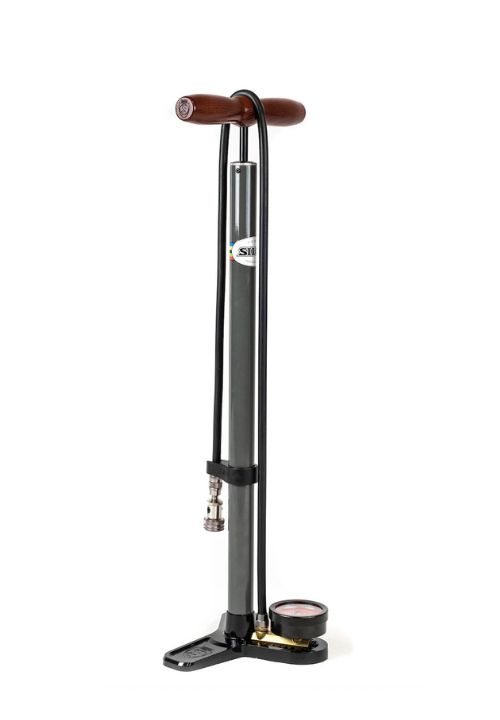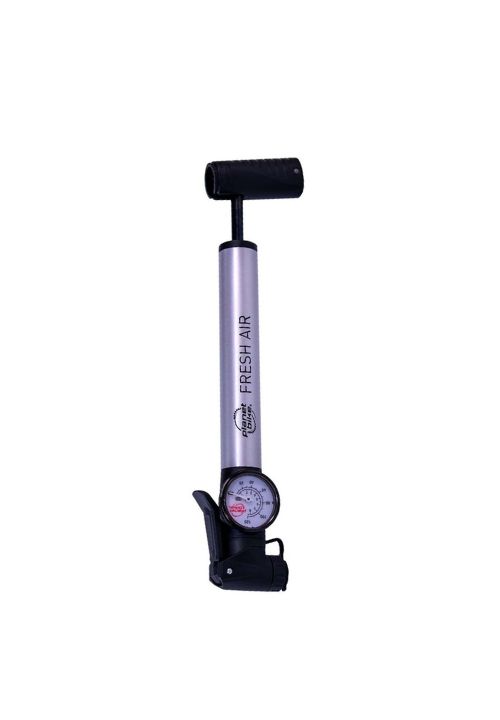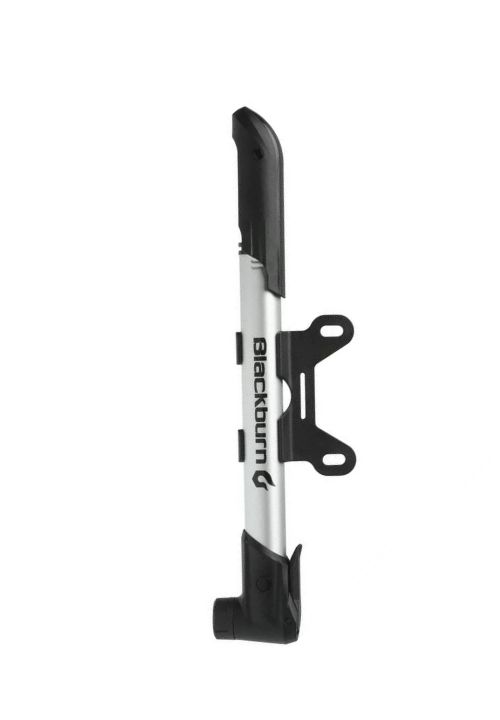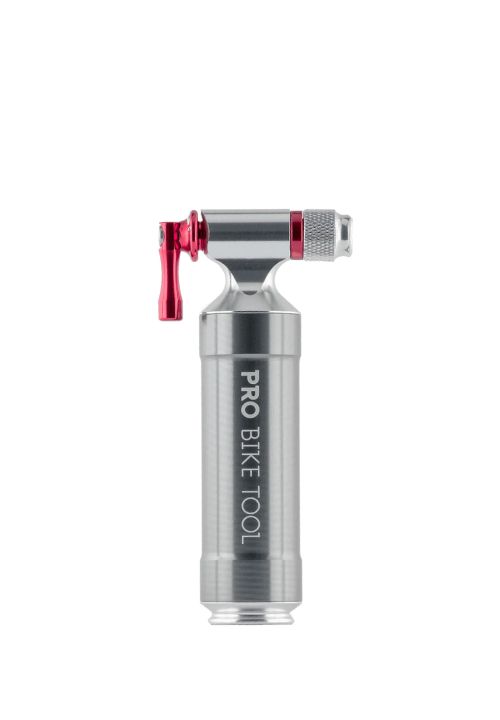Types of Bike Tire Pump
People tend to overlook proper tire inflation as a vital part of bike maintenance. Inflating the bike’s tire with the right pressure is necessary to ensure safety and good performance. However, choosing the right pump from different types of bike tire pumps can be a confusing task. You need to have proper knowledge about these types to choose the best one for you. We have prepared this article with a detailed discussion of the features of bike tire pumps. Also, we have added the advantages and limitations of each type. This will help you when you are trying to make a decision.
Contents
Types of Bike Tire Pump
In the following section, we will discuss the 4 types of bike tire pumps that are mostly seen on bikes-
Floor Pump

Floor pumps are also called track pumps or stand pumps. Floor pumps are mostly seen to inflate bike tires.
As the name sounds, one has to rest the pump on the ground. It creates a platform to keep your foot while inflating the tire. It helps to balance the pump with your body when you are using the pump. It comes with a big handle to pump air inside the tire.
Process
You need to attach the floor pump’s hose to the valve of the bike tire before you start inflating. The hose gets locked by a tiny lever. It attaches the valve with the hose securely. After securing the lock, you need to pull the pump’s handle upward. It will draw air from outside. Then you need to push the handle downward to force air inside the bike’s tire.
The floor pump takes approximately 20-30 strokes to reach 100 psi. The average cost lies between $18-32.
Advantages of using floor pumps
The advantages of floor pumps are listed below-
- Easy inflation due to high-pressure
- Pressure gauge ensures accurate inflation
- Stays stable while inflating tires
- Compatible with Schrader and Presta valves
Disadvantages of using floor pumps
The drawbacks of using floor pumps are-
- Comparatively expensive than other pumps
- Cannot carry while riding the bike
Further Reading: 7 Best Mountain Bike Floor Pumps
Mini Pump

By seeing the name, you can understand mini pumps are small in size. So these are just perfect to carry on your rides. Mini pumps can easily fit into your backpack or pocket. You can attach a mini pump on your bike where your bottle cage is attached. These pumps are also called by the names- micro and hand pumps.
Process
Most of the modern mini pumps are tubed. That means these pumps come with a little detachable hose. This hose is stored within the pump when you are not using the pump.
However, some outdated tiny tire pumps attach directly to the valve of your tire. However, these are quite difficult to use.
Furthermore, if you’re not careful while inflating the tire, you may easily bend or destroy your valve.
Mini pumps take 200-250 strokes to reach 100 psi when inflating a bike’s tire. You will find a mini bike pump within the range of $5-25.
Advantages of using mini pumps
The positive sides of using mini pumps are mentioned below-
- Easy to carry
- Can be attached to the bike using a frame mount
- Good for repairs when you are in a rush
Disadvantages of using mini pumps
The drawbacks of using mini pumps are listed below-
- Takes many strokes to pump a tire
- Doesn’t come with a pressure gauge
- Difficult to use compared to floor and frame pump
Frame Pump

Frame pumps work like mini bike pumps. Frame pumps are mounted straight to the bike’s frame. The pumps get attached to the frame using brackets or clips. So the rider doesn’t face any hindrance while pedaling.
Frame pumps are usually long and slim. They are portable and cyclists can easily carry them without adding extra weight to their backpacks. However, frame pumps are too big to fit on a mountain bike.
Process
Frame pumps are mostly integrated or tubed. As a result, they make a combination with an inflation tube. This happens in the tubed case. Here, the inflation tube is attached to the tire’s valve. Otherwise, the pump connects to the valve. This happens when the pump is integrated.
75-100 strokes are necessary to properly inflate a bike’s tire using a frame pump. The average cost of a frame pump is between $15-30.
Advantages of using frame pumps
The positive sides of using frame pumps are-
- Inflate a tire faster compared to mini pumps
- Easier to handle than mini pumps
- Easily attaches to the bike’s frame
- Very portable
Disadvantages of using frame pumps
The disadvantages of using frame pumps are-
- Weighs more than mini pumps
- Expensive compared to mini pumps
CO2 Inflator

The CO2 inflator is the smallest bike pump available on the market. Their best feature is that these are the most portable ones. These pumps use a pressurized CO2 cartridge. These are simple to operate and quickly inflate your tire.
However, Carbon dioxide(CO2) is soluble in rubber. So the tire will deflate faster compared to oxygen. So using a CO2 inflator is wise for emergencies. Once you get back to your garage, you need to inflate the tire properly.
Process
The process of inflating bike tires using CO2 inflators is easy. It just takes 3-5 seconds to inflate your bike tire with one of these after it is connected to the nozzle.
The CO2 cartridges of these inflators are single-use. So it’s wise to always carry a backup in case the first one doesn’t function correctly. Also, you can carry a pressure gauge to ensure your tire is inflated at the right pressure.
Always wear protection gloves when you are inflating a tire using a CO2 inflator to avoid cold burns.
The price of CO2 inflators resides between $20-30.
Advantages of using CO2 inflators
- Small in size, lightweight, and easy to carry
- Inflates tire faster
- Suitable for mountain and road bikes
Disadvantages of using CO2 inflators
- Good for emergency one-time situations but not regular usage
- Tires deflate quicker compared to other situations
- Can cause cold burns if you don’t wear gloves
Let’s See the: Best Bike Frame Adapter Bar
Conclusion
Maintaining the right tire pressure is a must to ensure safety while bike riding. The choice of a bike tire pump should align with your needs and preferences. We have discussed the 4 types of bike pumps so you can read and choose the best one according to your requirements. When selecting a pump, always remember to consider your riding style, where and how you’ll be using it, and your budget. However, you should consider regular tire maintenance to have a safe bike ride.


